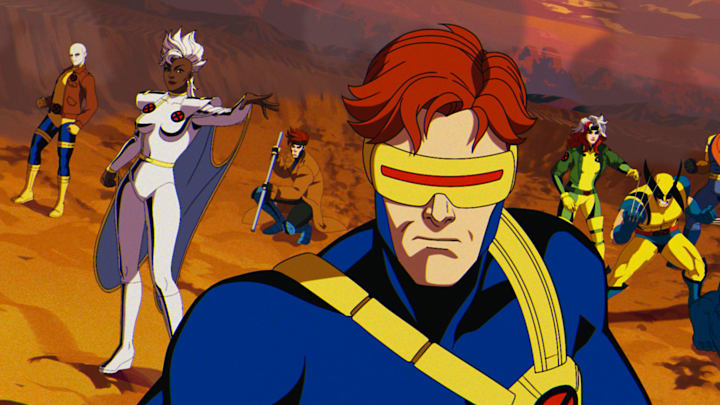Anything involving Marvel Studios and the X-Men was always going to excite fans, even if it wasn’t part of the Marvel Cinematic Universe. So anticipation was high for X-Men ‘97.
The Disney Plus show isn’t a reboot of the 1990s animated series. It’s a continuation. This added pressure to the show. People adored the original project and would criticize every mistake a sequel would make. Thankfully, the two-episode premiere was flawless.
One of the things that made it perfect were the nods to the comics. Marvel Studios always takes moments from the source material. It’s the same in X-Men ‘97. For example, the show's new arrival, Roberto Da Costa, is rich in Marvel Comics and the animated series. It's simple, but something important to the character's personality. That’s not the only connection to the comics. The upcoming five moments are major nods to comic book events.
WARNING! SPOILER AHEAD!
The Trial of Magneto
Comic book source: Uncanny X-Men No. 199 and 200
The second episode of X-Men '97 did a fantastic job adapting the Trial of Magneto. Just like the source material, Magento willingly gave himself up to face his accusers. There was a riot at the trial as well. The biggest difference is who was involved. Andrea and Andreas von Strucker led the charge in the comics while the "Friends of Humanity" were responsible for the unrest in the series.
Magneto's promise
Comic book source: Uncanny X-Men No. 200 and New Mutants No. 35
At the end of the Trial of Magneto, Charles Xavier is dying. With what he thought were his last breaths (he was saved by Lilandra Neramani and Corsair), Xavier asks two things of Magneto. First, he requests that he keeps his dream of mutant and human coexistence alive. The second is to lead and teach the New Mutants.
During episodes 1 and 2 of X-Men '97, Magneto says Charles left this message in his will. He also asks Magneto to lead the X-Men instead of the New Mutants. Either way, it’s a nice nod to the original storyline.
Magneto and Rogue's relationship
Comic book source: X-Men: Age of Apocalypse, Exiles No. 1 and 2, Uncanny X-Men No. 274
Rogue and Magento’s relationship is complicated. In Universe-616, they’ve flirted and acknowledged their feelings for each other. During Age of Apocalypse, they’re married and have a son. It's the same in Universe-27.
The Age of Apocalypse series explains why Rogue's power doesn't affect Magento. Erik Lehnsherr's powers allow him to create a magnetic field so Rogue doesn't drain him. That appears to be the same in X-Men ‘97. Nevertheless, there's something between them.
Storm loses her powers
Comic book source: Uncanny X-Men No. 185 and 186
Whether it’s the comics or X-Men ‘97, Storm losing her powers is tragic. In the cartoon, she’s hit with a shot meant for Magneto. It was similar in the comics. Instead of Magento, Henry Gyrich was aiming for Rogue and Storm jumped in the way to protect her. It’ll be interesting to see if Forge created the weapon in the animated series.
Jean Grey's clone
Comic book source: Uncanny X-Men No. 168 and X-Men: Inferno
The end of episode 2 of X-Men ‘97 shows Jean Grey, hurt and knocking at the X-Men’s door. The only problem is that Jean Grey is already in the house. That means someone is an imposter. There's a chance one of them is from an alternate reality, but there’s a simpler answer. One of the Jean Greys is Mr. Sinister’s clone. In the comics, the clone is Madelyne Pryor a.k.a. the Goblin Queen. The real mother of Nathan Summers.
If Mr. Sinister is at it again, he has access to Jean's DNA or held her prisoner for who knows how long. Second, it brings back trauma for Morph. Sinister manipulated him for years (as seen in X-Men: The Animated Series). Sinister may still have a hold on Morph. At the very least, Morph may act irrational when he sees him or hears Sinister’s name. The opening credits of X-Men '97 alludes to their history.
